Just when everyone assumed that the hounding and harassment of the Nobel Prize laureate and Stanford professor Thomas Südhof ended with a retraction of his PNAS paper – Elisabeth Bik arrived to the hounding party. The victim, a multi-millionaire biotech entrepreneur, calls his critics “professional bloggers” and accuses us of financially profiting from besmirching his and his female junior coauthors’ reputations.
The German-born neuroscientist is 68 years old, born 1955. In 2013, he received the Nobel Prize for Physiology or Medicine, which he shared with James Rothman and Randy Schekman – “for their discoveries of machinery regulating vesicle traffic, a major transport system in our cells”. Other awards arrived before and followed: the highest German national medal in 2014 (Großes Verdienstkreuz mit Stern), La Grande Médaille de la Ville de Paris, Lasker Award, Kavli Prize, Pioneer Award, etc. Südhof is member of several national academies in USA, Germany and other countries. He sits of boards of many pharma companies and research institutions (often in China). He used to hold transatlantic appointments in USA and Germany simultaneously. In Stanford, he runs two research centres: Center for Molecular Neuroscience in Health and Disease and the Institute for Stem Cell Biology and Regenerative Medicine.
Südhof is not a helpless and defenceless bunny he pretends to be. Neither is he really a heroic champion for early career researchers and WomenInStem. But he likes to play the part.
A welcome echo chamber
Previously, Maarten van Kampen looked into the numbers in Südhof’s papers, and the papers of his second wife and fellow Stanford professor, Lu Chen. Read here:
Science moves forward with productive and meaningful activities
“Yup we are being hounded.” – Thomas Südhof
One of these papers got retracted, after a long struggle against Südhof’s ego.
Pei-Yi Lin, Lulu Y. Chen, Peng Zhou, Sung-Jin Lee , Justin H. Trotter, Thomas C. Südhof Neurexin-2 restricts synapse numbers and restrains the presynaptic release probability by an alternative splicing-dependent mechanism Proceedings of the National Academy of Sciences (2023) doi: 10.1073/pnas.2300363120
To sum up how the retraction happened: Südhof’s postdoc and first author Pei-Yi Lin was apparently the main culprit, she even posted fabricated replacement “raw data” on PubPeer when challenged about irregularities in supplemental material. But the Nobelist, instead of asking for retraction and institutional investigation straight away, went through all the 5 classic stages of grief. He started with Denial, pushing for some very unconvincing and unlikely explanations, proceeded to Anger (at Maarten and myself), and to Bargaining (by offering to have his subordinate lab member re-analyse the data). Later, one of Südhof’s PubPeer posts showed sadness (even if not outright Depression):
“Overall, we concur that there are major inconsistencies with the source data of this paper compared to the existing raw data, which we are puzzled by. […] Our current preliminary conclusion thus is that, consistent with some of the comments, the source data of this paper contain major flaws that cannot be explained by copy-paste mistakes“
On 17 October 2023, PNAS published an editorial Expression of Concern:
“The editors note that significant concerns have been raised about the validity of some of the data reported in the article.”
The last stage of Acceptance was completed with the Retraction from 5 March 2024:
“The authors note, “We wish to retract the paper because re-analysis of the original raw data for Figs. 2, 4, and 6 (https://purl.stanford.edu/cp231wr9194) revealed that, although our analyses of the original data are supportive of the conclusions of the paper, unresolvable differences exist between these raw data and the published data source file that cannot be corrected by a simple erratum. In addition, the data source file contained copy-paste errors, and Fig. 1 included shifted data points that occurred during figure drafting. We thank Dr. Daniel Matus of Stanford University for his independent analysis of the primary raw data.”
Amazing how the conclusions can be simultaneously unaffected and unreliable. I also didn’t know Maarten’s real name was Daniel Matus…
Thomas Südhof and the standards of scientific rigor
Maarten van Kampen’s second attempt at hounding of Nobel papers.
For some reason, Südhof refuses to pronounce Maarten’s name (mine also). This is what he posted about the PNAS retraction on PubPeer:
“I acknowledge that PubPeer posts on the PNAS paper and the responses that were posted by a lab member without our lab’s contribution caused to us to reexamine the raw data. This led to the discovery that some of the data were not properly analyzed, which in turn prompted us to retract the paper. But PubPeer posts did not identify this problem, we did. PubPeer only made us aware of copy-paste errors in the paper that were unrelated to the issues of the analysis. If we had ignored PubPeer instead of doing due diligence, nothing would have happened, but we don’t get credit for this, only criticism. This is the problem with PubPeer: the comments usually identify non-scientific problems that are generally not relevant for the actual science but are framed as allegations. The fact that these comments find a welcome echo chamber in blogs and the press and the journals is a reflection of the times and surely gratifying to the PubPeer posters, but especially for junior scientists create a depressing environment.”
Indeed, the press started to take notice, in USA but also in Germany (read here).
Thanks to Elisabeth Bik and other image integrity sleuths, there will be possibly more retractions, for sure there will be many corrections. Here is one already corrected paper:
Alessandra Sclip , Taulant Bacaj , Louise R. Giam , Thomas C. Südhof Extended Synaptotagmin (ESyt) Triple Knock-Out Mice Are Viable and Fertile without Obvious Endoplasmic Reticulum Dysfunction PLoS ONE (2016) doi: 10.1371/journal.pone.0158295


Südhof replied on PubPeer with enormous amounts of western blot raw data, and insisted:
“This response illustrates using the original data that the allegations of blot duplications are mistaken.”
After a sleuth asked “Could Prof Südhof kindly extract from this pile of stuff just […] the pairs Munc18/syt1 and actin/tubulin“, Südhof refused to clarify, but stated:
“I hope PlosONE will publish these blots even though an Erratum is not appropriate since we are not aware of any mistakes in the original data – although given the similarity of the various bands in the various blots, we could have made mistakes, which we can’t rule out because we are human.”
The bands are never duplicated, even if they quite possibly are. Nobel thinking!
On 6 February 2024, PLOS One published a long Correction (highlights mine):
“With this notice we provide amended versions of Fig 3, S1 Fig, and the Data Availability statement in [1].
Fig 3 has been updated to address the following questions:
- Concerns were raised that the Munc18 and Syt1 panels of Fig 3A appeared similar and did not appear to match the primary image data for these experiments. In the updated figure, these panels have been replaced with different data from the original experiments that look more dissimilar. […]
These figure updates do not impact the results and conclusions as stated in the article [1]. The original images underlying Fig 3A, Fig 3C, and S1C Fig are provided in S1–S3 Files.”
Totally shameless, and don’t try this if you are not a Nobel Prize laureate.
Toppling Giants in Stanford
Everyone is talking about Stanford’s President Marc Tessier-Lavigne now. OK, let’s talk about him, and how Stanford deals with research fraud. And then let’s talk about Thomas Rando.
Bik and the weapons of artificial intelligence
Maarten is a physicist, and his speciality are dodgy numbers, not duplicated images. But raw numerical data is a rare commodity with biomedical papers, most journals never ask for that to be uploaded as supplementary. A few weeks ago, the legendary Elisabeth Bik started to look into the images of Südhof’s papers. The pseudonymous Cheshire soon joined her, both were assisted by the ImageTwin software. Predictable result: Südhof is extremely angry.
Erica Seigneur , Thomas C. Südhof Genetic Ablation of All Cerebellins Reveals Synapse Organizer Functions in Multiple Regions Throughout the Brain Journal of Neuroscience (2018) doi: 10.1523/jneurosci.0360-18.2018
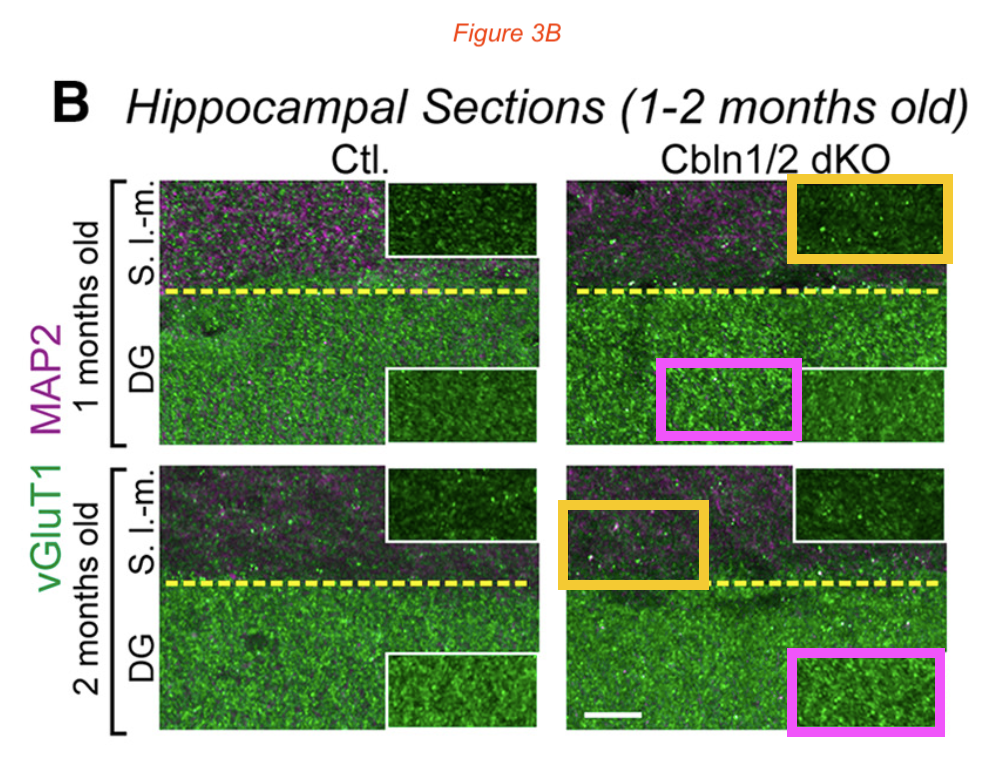
Pink boxes: Part of the 1 months old Cbln1/2 dKO panel has been used as the inset for the 2 months old panel.
Amber boxes: Part of the 2 months old Cbln1/2 dKO panel has been used as the inset for the 1 months old panel.”

Red boxes: In the vGAT MAP2 row, the Ctl and Cbln1/2/4 tKO panels look identical, but the insets are different.”

“Concern about Figure 2:
- Cyan boxes: The PSD95 panels of Cerebellum and Thalamus appear to show the same blot, but in mirror image.
- Blue boxes: The corresponding Actin panels also appear to show the same blot, but in mirror image, and with a change in aspect ratio.
- Red boxes: The vGAT Actin panels of Caudate-Putamen and Thalamus appear to be identical.
- Some Actin panels have been reused within the same column, but those are appropriate duplications, so I did not label them.”
The first author Erica Seigneur admitted to duplicated gels, and later on admitted about the microscopy images to have “accidentally swapped the two panels” which she said “was an honest mistake“. When pressed whether a correction will be forthcoming, Südhof himself replied on PubPeer:
“Although we are confident that Dr. Bik has contacted J. Neurosci. for us already after placing her social media posts, we have also inquired with the journal. We are specifically asking them how to publish a correction of a mistake that is invisible without artificial intelligence tools and that has no consequence for the science.”
He then added (highlight mine):
“However, we are deeply disturbed by attempts to call into question the integrity especially of young scientists who forgot to press a button hard enough and are now being pilloried for this mistake by commentators who may be doing this for financial gain.“

“Financial gain“? Says the man who converted his Nobel Prize into millions of dollars in industry money? Südhof founded several biotech startups – Boost Neuroscience, Circuit Therapeutics, Recognify Life Sciences, NeuCyte and REATA Pharmaceuticals, the latter was sold in 2023 to Biogen: “a bidding war ensued in which Biogen came out on top, anteing up about $7.3 billion in cash to acquire Reata“.
The man who suspects greed everywhere also sits on the boards of
- Pharma giant Sanofi (as independent director)
- Investment company Catalio Capital (as venture partner)
- US biotech Neurocentria
- US biotech CytoDel
- US biotech Abide
- Chinese biotech Simcere Pharmaceutical
- German private hospital Limes Schlosskliniken
And many others. And of course Südhof joined several other money-affine Nobelists to sit on the board of Elysium Health, which is an anti-aging supplement business by Leonard Guarente and David Sinclair:
The original sins of Leonard Guarente
“Without specific and credible allegations of research misconduct, MIT is unable to take any action.”
Südhof is even listed as board member of a rascist research institution of the russian Academy of Science in Moscow (he never replied to me to explain that):

Maybe a person who only does things to enrich himself can’t comprehend why anyone would do anything at all without any “financial gain”? Incomprehensible for Südhof, but none of us is doing our work for money. We do this work for free, I sometimes have to invest money, including for lawyers when dishonest scientists retaliate. But the multimillionaire Nobelist certainly does many things to make even more money for himself. Including publishing dodgy science. While accusing others of ulterior motives.
My emails to Südhof went unanswered. But he doubled down on Bik and Cheshire:
“‘Volunteers’ who are also professional bloggers do have a conflict of interest.”
Which is strange, I am the only professional blogger here. Südhof then proceeded of accusing us to lack “integrity” by harassing “young researchers” so that “they might be accused of fraud because of undetectable isolated errors“. In his next post, Südhof contradicted himself, turned out it was not the young defenceless female researchers who were harassed, but old male multimillionaire Nobelists:
“Clearly Actinopolyspora biskrensis and Dr. Bik, who are professional bloggers, say they blame the PI (i.e., me) for the mistakes but none of the people involved, neither I nor the postdocs/students who made the mistakes nor other co-authors, could possibly detect these mistakes before sophisticated AI software identified them. What is questioned here is not the science or research integrity, it is our failure to see an accidental image duplication that is undetectable without computational tools. The professional bloggers are now trying to turn this into a question of research integrity which is deeply misleading, and claim that they are doing this not for financial gain. Judge for yourself!”
I explained to Südhof in an email, in German even, that while others he accuses are not Jewish, I am though, as well as a professional blogger. I told him that such antisemitic-sounding allegations of “financial gain”, from a German no less, are very unpleasant to hear. Südhof never replied. It is his feelings which matter, not those of other people he insults in public.
Another Jewish conspiracy against Ruggiero Santilli!
EU Commission gives €6 million to an obscure German start-up, promising to convert sewage to synthetic fuels. Internet sources suggest behind all this is “Professor” Ruggiero Santilli, the litigious “Florida Genius”, eternally self-appointed Nobel Prize candidate and sock- puppeteering businessman. Exactly the kind of “fringe scientist” Smut Clyde likes to write about!
Back to Südhof’s neuroscience. Here a Cell paper which Südhof had to correct previously to admit that his discovery was not original at all:
Jie Wang , Yi Miao , Rebecca Wicklein , Zijun Sun , Jinzhao Wang , Kevin M. Jude , Ricardo A. Fernandes , Sean A. Merrill , Marius Wernig , K. Christopher Garcia, Thomas C. Südhof RTN4/NoGo-receptor binding to BAI adhesion-GPCRs regulates neuronal development Cell (2021) doi: 10.1016/j.cell.2021.10.016

Red boxes: The HBD-GAIN/RTN4R BAI1 and BAI3 panels appear to show the same photo.”
The first author Jie Wang admitted on PubPeer to a “mistake” and “oversight”. Südhof reacted there with:
“Dr. Bik’s passionate pursuit of our lab using new artificial intelligence tools may have uncovered yet another copy-paste error in a representative figure panel that we will look into and that would obviously have escaped our attention without her artificial intelligence tools.“
Without any “artificial intelligence tools” I can see that Südhof is wrong – this is not a “copy-paste error” because the duplicated image changed its signal intensity during copy-pasting.
In the next case, it started with irregularly spliced gels and ended with worse findings once Bik had a look:
Jacqueline Burré, Manu Sharma , Thomas C. Südhof Systematic mutagenesis of α-synuclein reveals distinct sequence requirements for physiological and pathological activities Journal of Neuroscience (2012) doi: 10.1523/jneurosci.3545-12.2012
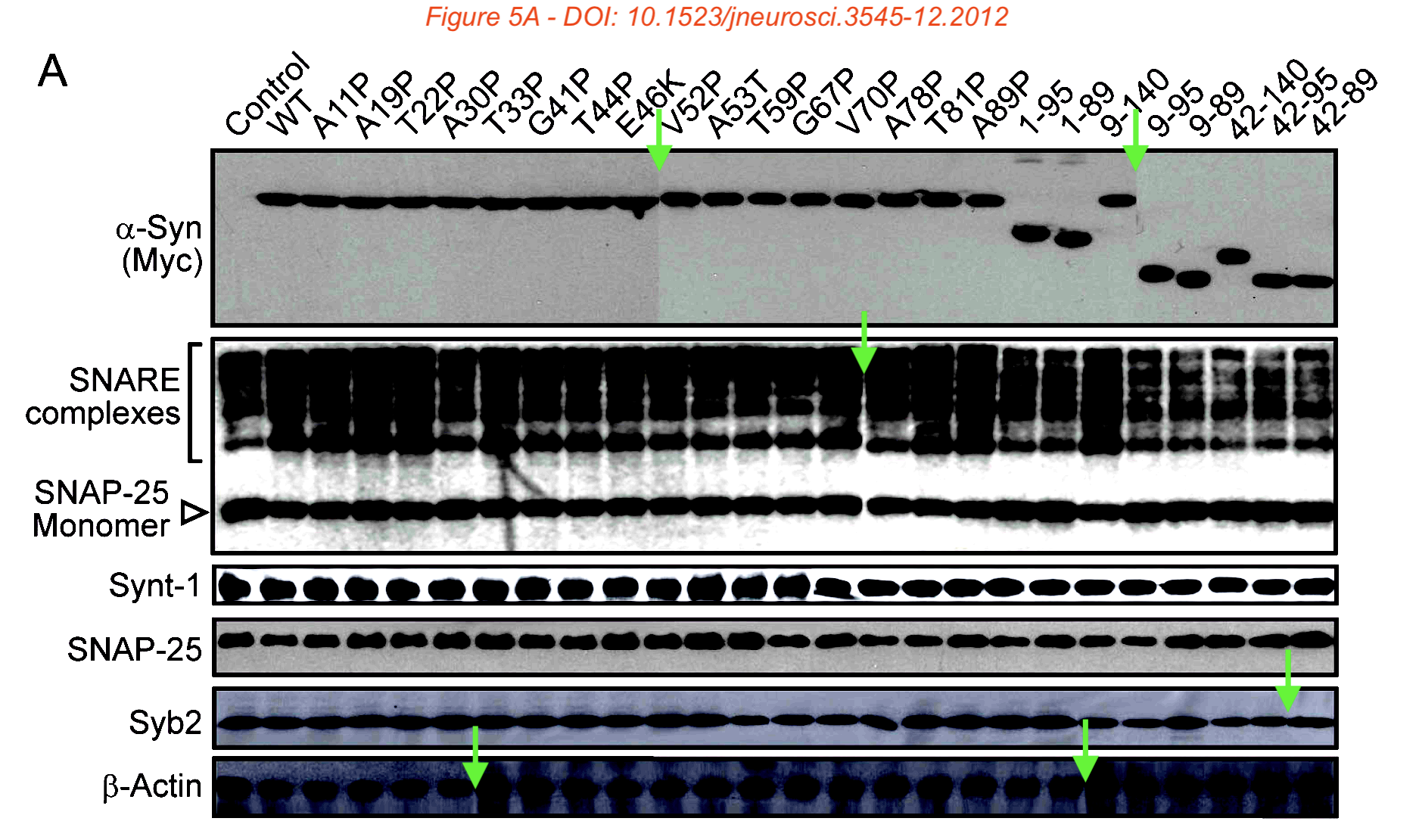

Yellow boxes: The A89P and 9-89 panels appear to overlap, with a 90-degree rotation.
Purple boxes: The 1-95 and 1-89 panels appear to overlap, with a 180-degree rotation.”

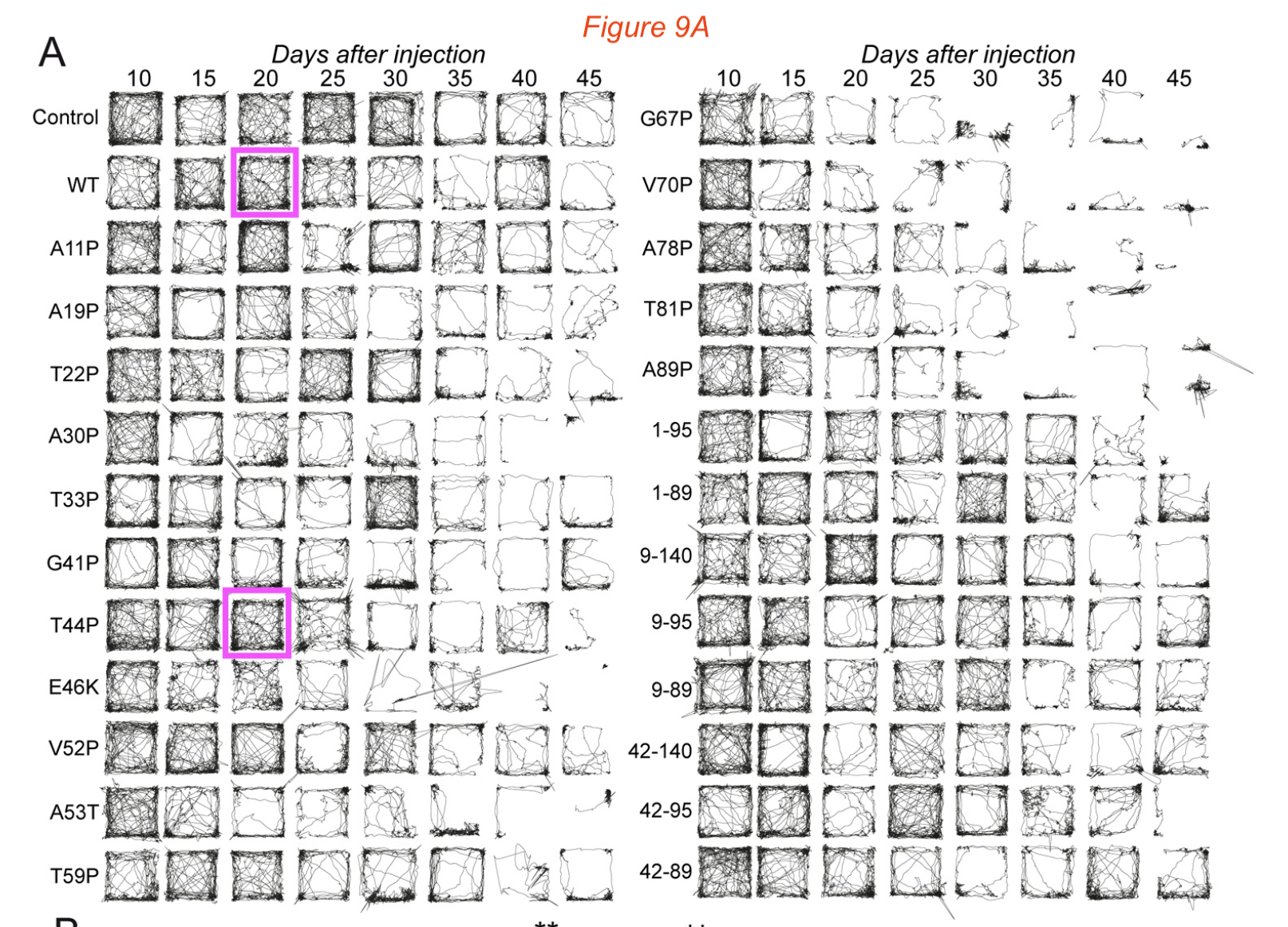
Pink boxes: in the Day 20 column, the WT and T44P panel are the same.
Also, some panels appear to show mice wandering far out of their box (e.g. 42-89 day 25, or E46K day 30). How can this be explained?”
The first author and a fellow German Jacqueline Burré, now associate professor at Weill Cornell, admitted “errors”, but protested: “we take exception to the accusatory term ‘spliced blots’“. Südhof himself complained:
“A decade ago, before the current atmosphere of prosecution, it was assumed and accepted that composite blots like the one cited by the accusers would be assembled from multiple individual blots, each of which includes its own control and is clearly recognizable as a separate blot. Nowadays this is considered deception even though there is no attempt to hide it“
The Nobelist later added:
“Dr. Bik & Co are trying to create the impression of a systemic problem when there is only simple human error by many different young scientists assembling figures containing tens and sometimes hundreds of images. […] The systemic problem is with PubPeer commentators who chase minor human errors but neglect what is truly important, namely the overall science that is not dependent on a single pasted image but on a large number of data.”
As reminder, Südhof retracted a paper in PNAS because its large number of data was falsified. This kind of underlying raw data is not publicly available in supplemental material for many of the other papers under criticism.
Again, the secret of Burre’s progress from Südhof’s postdoc to professor:
Jacqueline Burré, Manu Sharma, Thomas C. Südhof Definition of a Molecular Pathway Mediating α-Synuclein Neurotoxicity Journal of Neuroscience (2015) doi: 10.1523/jneurosci.4650-14.2015
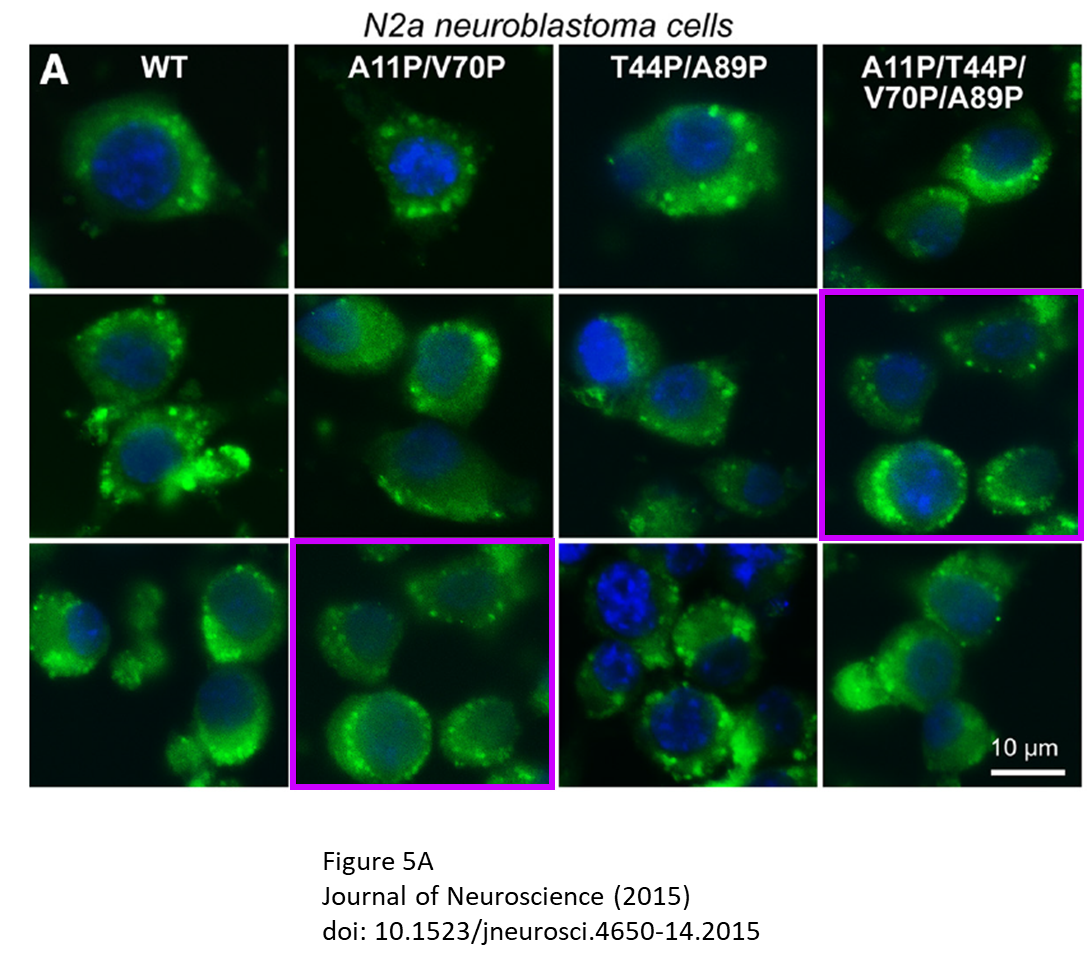
Actinopolyspora biskrensis: “Two images in Figure 5A seem more similar than expected for different treatment groups.”
Burre posted a reply which sounded very much like at least influenced by Südhof (highlight mine):
“We erroneously duplicated images owing to copy-paste mistakes in the illustrations. Once the error happened, we were unable to detect it without current artificial intelligence software. Note that none of the scientific conclusions are affected…“
Indeed, to expect that authors pay any attention to what images they use for published and peer-reviewed figures, is anti-science and tantamount to a witch-hunt. Anyway, Bik pointed out that “this is not a simple duplication. The blue signal is stronger in one of the pink-boxed panels than in the other“.
You know what Barre replied? She openly admitted that she routinely “adjusted for exposure” in figure panels, achieving a varying signal intensity between images. And she claimed it’s irrelevant. Is this how the Nobelist Südhof trains his postdocs, and how Professor Barre now trains her own postdocs?
Julius Caesar & Daria – Brazilian Tango in Stanford
The published research by Daria Mochly-Rosen and her mentee Julio CB Ferreira supports the theory that maybe Stanford is a bad place for science.
Is this, rather recently published in Science, deception or Nobel trolling:
Richard Sando , Xian Jiang , Thomas C. Südhof Latrophilin GPCRs direct synapse specificity by coincident binding of FLRTs and teneurins Science (2019) doi: 10.1126/science.aav7969

The first author Richard Sando, now assistant professor at Vanderbilt University, meekly apologised for this “mistake”, and announced a correction. Could happen to anyone indeed. In Südhof’s lab at least.
The next paper, also in Science, was flagged already in May 2023. Some allegations of duplicated images proved unsupported, others were verified, and new problems found. Nevertheless, Südhof decided to play victim.
Jacqueline Burré , Manu Sharma , Theodoros Tsetsenis , Vladimir Buchman , Mark R. Etherton , Thomas C. Südhof Alpha-synuclein promotes SNARE-complex assembly in vivo and in vitro Science (2010) doi: 10.1126/science.1195227

Südhof’s last position was:
“We apologize but feel that the original blots presented above are of sufficient resolution to rule out the allegation by the accusers that the blots were duplicated, and hope the accusers will agree.“
Instead, his first author Jacqueline Burré agreed with the accusers:
“How could a duplication have happened? We have literally no idea, and we cannot tell which one is the correct one because they are blank blots and therefore, we cannot allocate them to the original blot.”
I have an idea, but I will better keep it for myself.
Fake data and real pomegranate juice in Nobelist Louis Ignarro’s papers
Louis J. Ignarro knew how to monetize his 1998 Nobel Prize for discovery of nitric oxide as molecular cell signalling agent. He made many millions selling dietary supplement for Herbalife and pomegranate juice for POM Wonderful Company. Some of that found its way (without proper conflict of interest declaration) into Ignarro’s peer reviewed papers. Those,…
In another journal of Science family, cells were digitally re-arranged for reasons unknown. Worth noting it has the same author Pei-Yi Lin who admitted data manipulation in the retracted PNAS paper Lin et al 2023:
Pei-Yi Lin , Lulu Y. Chen , Man Jiang , Justin H. Trotter , Erica Seigneur , Thomas C. Südhof Neurexin-2: An inhibitory neurexin that restricts excitatory synapse formation in the hippocampus Science Advances (2023) doi: 10.1126/sciadv.add8856
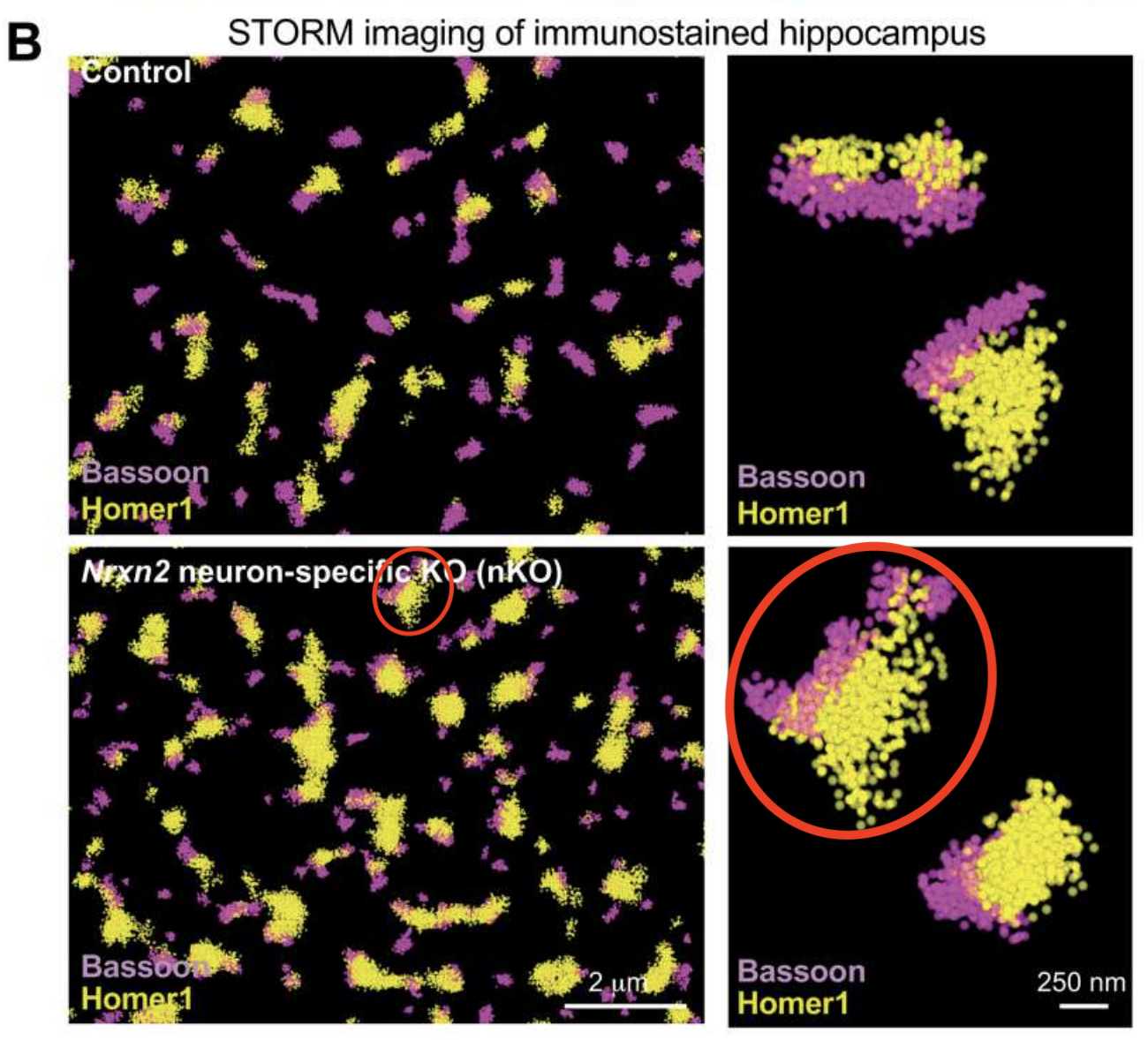
Bik on Figure 4B: “The two enlarged clusters in the top right photo appear to be both missing from the image shown on the left[…]. Only the cluster shown in the red box can be seen in the enlarged image on the right, but its partner in that image is not present in the image on the left. So the right photo contains two different clusters that were not adjacent to each other in the left photo. It seems apparent that the right photo was ‘stitched’ or spliced.”
Südhof was furious about “Dr. Bik’s relentless accusations on PubPeer and ‘X’ (Twitter)“:
“Dr. Bik’s passionate eagerness to find fault with our work leads her to accusations that are simply incorrect. The paper clearly states that the right images are representative enlargements of two synaptic junctions and never stipulates that the two synapse images are adjacent to each other in a lower magnification image or even that they are found in the left images – they are just beautiful examples of synapses that we like. Stitching implies the accusation that we are trying to hide something which we don’t,”
Not true what Südhof says: in his paper, he described the composite image as “Representative” of “direct stochastic optical reconstruction microscopy (dSTORM)“, i.e. as original unedited microscopy data. Whatever their reasons, the authors were indeed trying to hide something.

Later on, Südhof blamed the digital editing on our not living “in a perfect world without size limits on figure legends“, and adding:
“I think this is another example of what PubPeer has become: a forum for discovering minor mistakes and finding irrelevant ‘issues’ that pillory young scientists, accompanied by social media posts with advertisements.”
I think he refers to Bik’s posts on X (former Twitter). The advertisements there bring money to X’s owner, Elon Musk. Not to Bik. One would think a man with so many business engagements as Südhof would understand such things, but no.
There are more PubPeer threads for Südhof, currently over 30. This was already corrected, and might need another correction:
Justin H Trotter, Junjie Hao , Stephan Maxeiner , Theodoros Tsetsenis , Zhihui Liu , Xiaowei Zhuang, Thomas C Südhof Synaptic neurexin-1 assembles into dynamically regulated active zone nanoclusters The Journal of Cell Biology (2019) doi: 10.1083/jcb.201812076
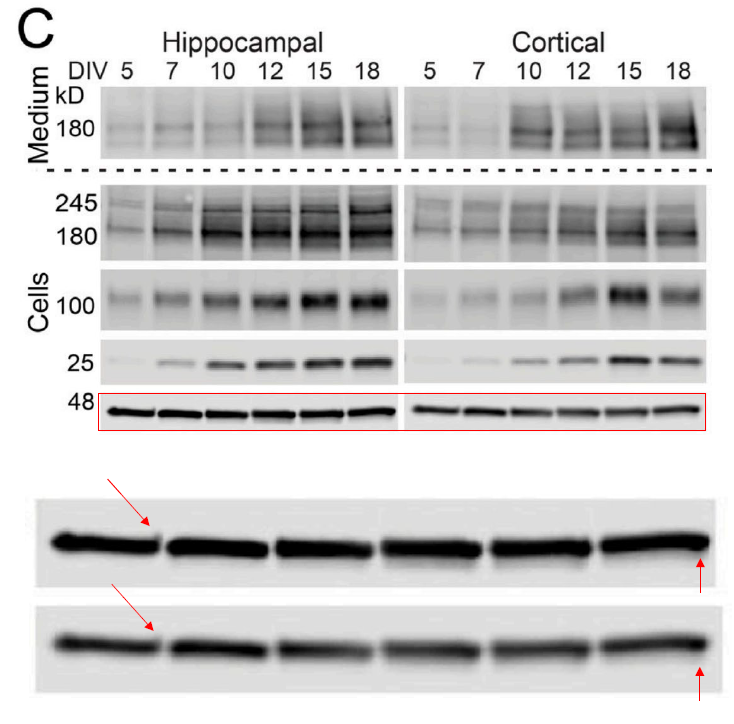
Südhof’s reply on PubPeer: “We are now correcting this switch that has no import on the actual paper and have deposited images of the full-length blots for Figure 7C in a public database so that any concerned person can assess them (https://doi.org/10.25740/vw465gc3869). Naturally, these mistakes will prompt our additional diligence to minimize further recurrences.”
The Correction from 4 September 2023 mentioned “The error applies only to the illustrative blots and not to the quantifications and conclusions.” Then Bik found another duplication, but Südhof closed that case already:

“Figure S1E in the supplemental.
- Cyan boxes: The VGLUT1 and VGAT red and green signals appear to overlap, while the blue signals are different. Only shown in the Merged panels.”
The first author Justin Trotter, now group leader at UC San Diego, protested on PubPeer: “This is not a mistake and there is nothing untoward here.” According to him, VGLUT1 and VGAT were co-stained on same sample, and just shown separately. Did the authors stain only one single slice and took only one single picture which they declared to be representative? Trotter insists: “We have dozens maybe even hundreds of images we could have chosen from“. but since they chose not to, these other images possibly didn’t really support the unaffected conclusions. Südhof was in a way right when he berated Bik for not knowing how his lab does such experiments.
Gregg Semenza: real Nobel Prize and unreal research data
“Even after people have been telling you for, you know, 20 years or more that it’s going to happen, no one expects it.” -Gregg Semenza, Nobel Prize winner 2019
In one case though, Südhof’s younger colleagues and fellow Germans showed him how to respond to PubPeer evidence properly:
Moritz Mall, Michael S. Kareta , Soham Chanda, Henrik Ahlenius , Nicholas Perotti , Bo Zhou , Sarah D. Grieder , Xuecai Ge , Sienna Drake , Cheen Euong Ang , Brandon M. Walker , Thomas Vierbuchen, Daniel R. Fuentes , Philip Brennecke , Kazuhiro R. Nitta , Arttu Jolma , Lars M. Steinmetz, Jussi Taipale, Thomas C. Südhof, Marius Wernig Myt1l safeguards neuronal identity by actively repressing many non-neuronal fates Nature (2017) doi: 10.1038/nature21722

Should “55-1187” not be “58-1187″ or vice versa? The deletion mutant is labeled differently between the a) and b) panels.”
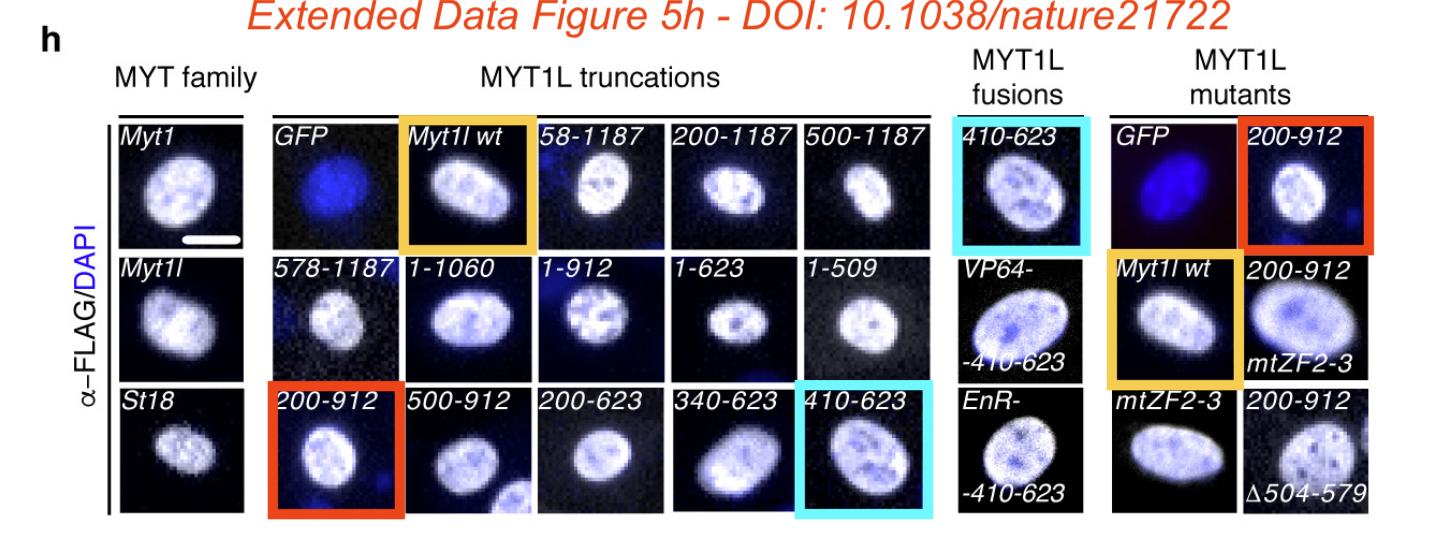
Südhof posted a statement by his co-authors, a fellow Stanford professor Marius Wernig and first author Moritz Mall, now group leader at German Cancer Research Center (DKFZ) in Heidelberg:
“We are very grateful that you pointed out these mistakes. You are exactly right that these 2 IF panels are identical and one of them is mis-labeled. The image that is wrong is the one for Myt1l-WT. […] Despite several lab members proof-reading the manuscript before final submission this mistake escaped our eyes. This IF panel is also slightly mis-labeled it should be “58-1187” instead of “55-1187”. We are still in the possession of the original images and will correct these 2 mistakes and ask Nature to replace this supplemental figure with a correction. We are sorry for the confusion this has caused.
Regarding your second point, as you pointed out, those nuclear stains are also identical but this was in fact intentional. The images are clearly labeled with the same condition. They have been duplicated for easier comparison of the different kinds of Myt1l mutations that we screened. However, we agree that there is no problem to show another example for the other comparisons and will exchange the nuclear stainings in question with another example to be included in the corrected figure.
Thank you again for your careful attention to our paper!”
Note that the authors understand that it is actually not right to intentionally reuse “representative” images. A basic rule which nobody in Südhof’s lab seems to grasp, despite or maybe because of his Nobel Prize.
Nobelist Harald zur Hausen and the Scamferences
Smut Clyde tells you about some abysmally bad scamferences and the kind of scholars frequenting them, and I explain why Nobel Prize winner Harald zur Hausen is one of them.
Another “mistake” by Wernig, Mall and Südhof, flagged again by Bik. Two mistakes in fact, or maybe mice from different litters have identical brains:
Markus Wöhr , Wendy M. Fong , Justyna A. Janas , Moritz Mall , Christian Thome , Madhuri Vangipuram, Lingjun Meng , Thomas C. Südhof, Marius Wernig Myt1l haploinsufficiency leads to obesity and multifaceted behavioral alterations in mice Molecular Autism (2022) doi: 10.1186/s13229-022-00497-3

It was not only Elisabeth Bik and Cheshire who found issues. Other PubPeer users joined, here is a brand new paper in Nature:
Shuai Wang, Chelsea DeLeon, Wenfei Sun, Stephen R. Quake, Bryan L. Roth, Thomas C. Südhof Alternative splicing of latrophilin-3 controls synapse formation Nature (2024) doi: 10.1038/s41586-023-06913-9
Also flagged were identical p-values across several figures. Südhof reacted sarcastically:
“Thank you for these constructive comments that may have been prompted by robotic duplication fraud searches instead of a reading of the paper.”
He is hounded by robots now.
Requiem for Celixir
How the Nobel Prize winner Sir Martin Evans and the lying crook Ajan Reginald almost succeeded, were it not for Patricia Murray.
And here, Südhof did not deny that the gel was duplicated, but he instead turned the accusations around:
Alessandra Sclip, Thomas C Südhof LAR receptor phospho-tyrosine phosphatases regulate NMDA-receptor responses eLife (2020) doi: 10.7554/elife.53406
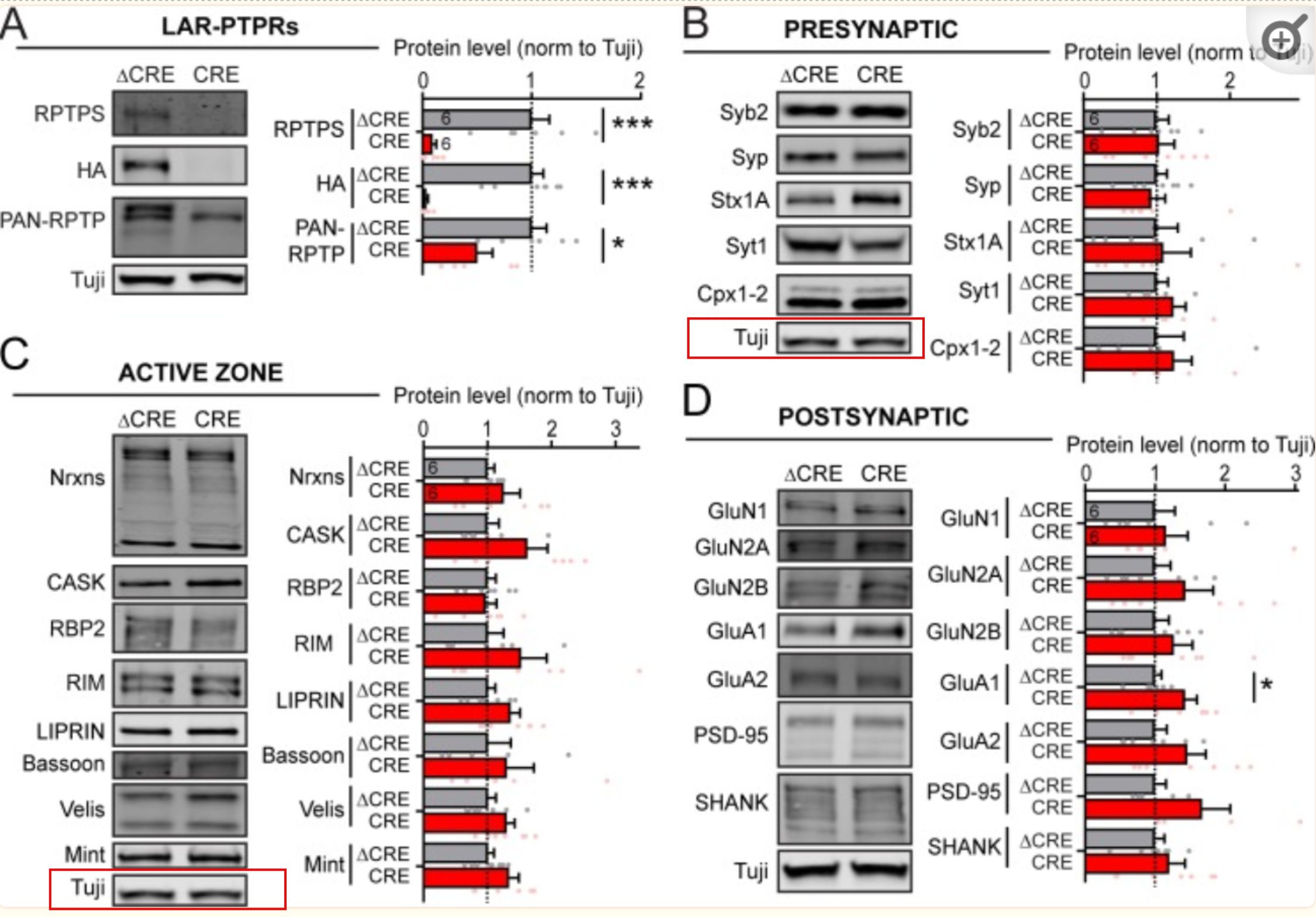
Südhof had enough:
“A PubPeer commenter has now contacted E-Life to demand that we publish a ‘correction’ to pretend that panels B and C were not from the same experiments. We consider pretending this as unethical and are wondering where science integrity is heading, where pretense and artifice are becoming more important than science content.“
In fact, another old white male hero of research integrity, the Dutchman Lex Bouter, previously outlined specific plans on sanctioning whistleblowers for research misconduct.
Lex Bouter, King of Research Integrity
My uninvited contribution to WCRI 2022

Our angry old German man in California set up a website to rebut the PubPeer allegations, where he complains (presumably to fellow old men):
“PubPeer is non-transparent, censors responses, and uses anonymous commentators with continuously changing aliases. Moreover, PubPeer posts are communicated to journals and university administrators to widely disseminate the views of PubPeer without feedback by the feedback by the accused, and many PubPeer commentaters maintain commercial websites publicizing their findings.“
Südhof must refer to yours truly and my “commercial” website. Because people of my, uhm, persuasion are always after money?
How USA embraced research fraud: review of two books
A review of “The Baltimore Case” by the historian Daniel Kelves and “Science Fictions” by the journalist John Crewdson, which also tell the history of the Office of Research Integrity (ORI).
Injured Male Pride
Eventually, it became really silly. Südhof was apparently not prepared to have a woman telling him what’s wrong with his papers. You won’t believe what he did next.
Let’s start here – the gel bands below are clearly identical, but Südhof disagreed:
Samantha R. Golf, Justin H. Trotter , George Nakahara , Thomas C. Südhof Astrocytic Neuroligins Are Not Required for Synapse Formation or a Normal Astrocyte Cytoarchitecture bioRxiv (2023) doi: 10.1101/2023.04.10.536254

In the last decade, Bik found duplications in many thousands of papers and achieved hundreds or maybe thousands of corrections and retractions. But even Bik met her master now – an angry old German man in California. The Nobelist berated Bik’s amateurism:
“A common mistake in the search for blot duplications is to assume that if blots have similar artifacts and features (as shown here) they must be duplicated. However, if similar samples are run on the same gel apparatuses at the same relative positions in the gel, they will have the same artifacts and features because these are introduced by the gel combs and the gel apparatuses. Similar concerns apply to blotting backgrounds.”
Rest assured Südhof will silently replace this gel between the preprint and the peer reviewed version. For now, he declared:
“…since this is a preprint and not a published paper, we don’t see a need to respond further. Given that we now have AI-based software to avoid copy-paste errors in papers, we will avoid copy-paste errors.”
I was pretty sure he bought access to the Israeli image analysis software Proofig. Read about this company’s business model here:
Proofig – the Kolodkin-Gal family business
“Don’t let online controversies and aggressive blogs easily ruin everything you’ve worked for to build your reputation […] Whether the image issue is innocent or intentional, the outcome is still the same. Bloggers will attack that publication with image issues, which will damage your reputation and may even lead to a costly investigation. We are…
And soon, I was proven right! Südhof does use Proofig. Here, Bik flagged two identical gels:
Taulant Bacaj, Mohiuddin Ahmad, Sandra Jurado, Robert C. Malenka, Thomas C. Südhof Synaptic Function of Rab11Fip5: Selective Requirement for Hippocampal Long-Term Depression Journal of Neuroscience (2015) doi: 10.1523/jneurosci.1581-14.2015

Several days later, Südhof replied with a practical example:
“As we pointed out previously, bands are expectedly similar when run on the same apparatus and analyzed by Coomassie or blotted with similarly clean antibodies. As an example, I would like to show here an experiment performed by my colleague Dr. Xuchen Zhang. Columns 2 and 3 in panel A of the attached Coomassie gel are different but after we cropped columns 2 and 3 separately in panel B and used the AI-powered automated image-proofing software, the AI software told us columns 2 and 3 are identical – even the same if we only show the red rectangles in panel C. One just cannot tell, no matter how sophisticated the analysis, whether or not cropped bands are the same or different even if they show the same artifacts.”

No wait, it gets crazier. This paper was not flagged by Bik. And not by Cheshire or anyone else. It was flagged by a former member of Südhof’s lab. You met his former PhD student Erica Seigneur before:
Erica Seigneur , Jai S. Polepalli , Thomas C. Südhof Cbln2 and Cbln4 are expressed in distinct medial habenula-interpeduncular projections and contribute to different behavioral outputs Proceedings of the National Academy of Sciences (2018) doi: 10.1073/pnas.1811086115

Proofig in use! Same situation here:
Jaewon Ko , Marc V. Fuccillo , Robert C. Malenka , Thomas C. Südhof LRRTM2 Functions as a Neurexin Ligand in Promoting Excitatory Synapse Formation Neuron (2009) doi: 10.1016/j.neuron.2009.12.012
Jaewon Ko, now back in Korea as professor, posted this out of the blue:

Then, another anonymous sleuth, Aneurus Inconstans, chimed in to help the self-investigators.

“there is another issue in Supplementary Figure 3, two micrographs of S3B overlap and are supposed to describe cells expressing different fusion proteins.”
Ko replied, thanking “for identifying this additional mistake that I overlooked because it was not obvious to the naked eye“, and explaining that the duplication never affected the conclusions and quantifications.
Despite the tough claims of searching by “naked eye“, we can rest assured Südhof is using his new toy – Proofig, on his own papers which were not previously reported by Bik and others. Very laudable, but still, crazy. What exactly does this angry old man seek to prove, to Bik and to the scientific community? Serious question.
Also this was unexpectedly flagged by Südhof’s former postdoc Lulu Y Chen, now assistant professor at UC Irvine. Again, posted on PubPeer soon after Südhof announced to have an “AI-based software” (illustration by Aneurus):
Lulu Y. Chen, Man Jiang, Bo Zhang, Ozgun Gokce , Thomas C. Südhof Conditional Deletion of All Neurexins Defines Diversity of Essential Synaptic Organizer Functions for Neurexins Neuron (2017) doi: 10.1016/j.neuron.2017.04.011
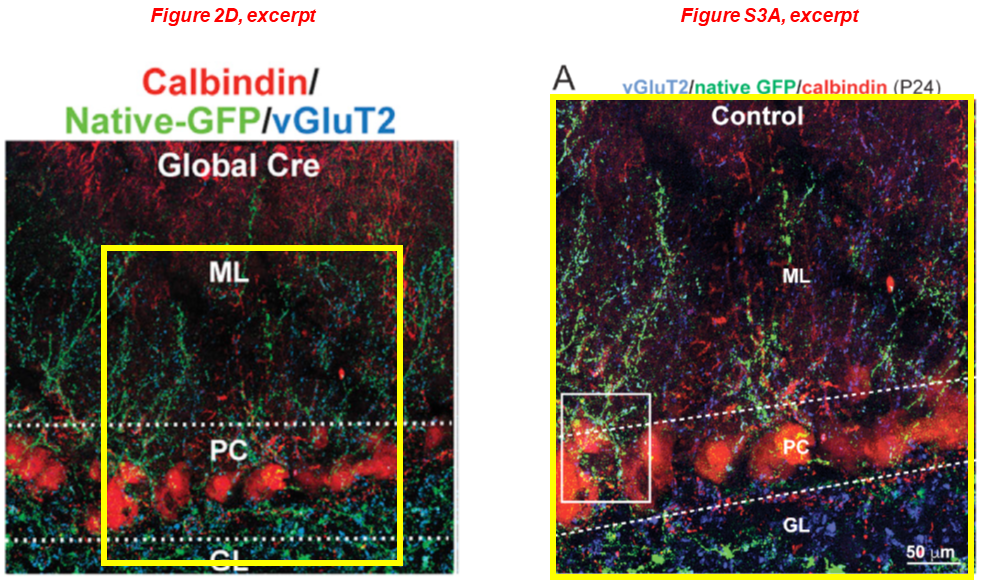
Aneurus Inconstans then noted that “The two micrographs are supposed to represent Global Cre and control” and that they “differ significantly in the bottom part of the overlapping area for the intensity of Native-GFP and vGluT2 signals.” Whatever Chen claims, “a copy-paste mistake” this is definitely NOT. Especially given what else Aneurus found:
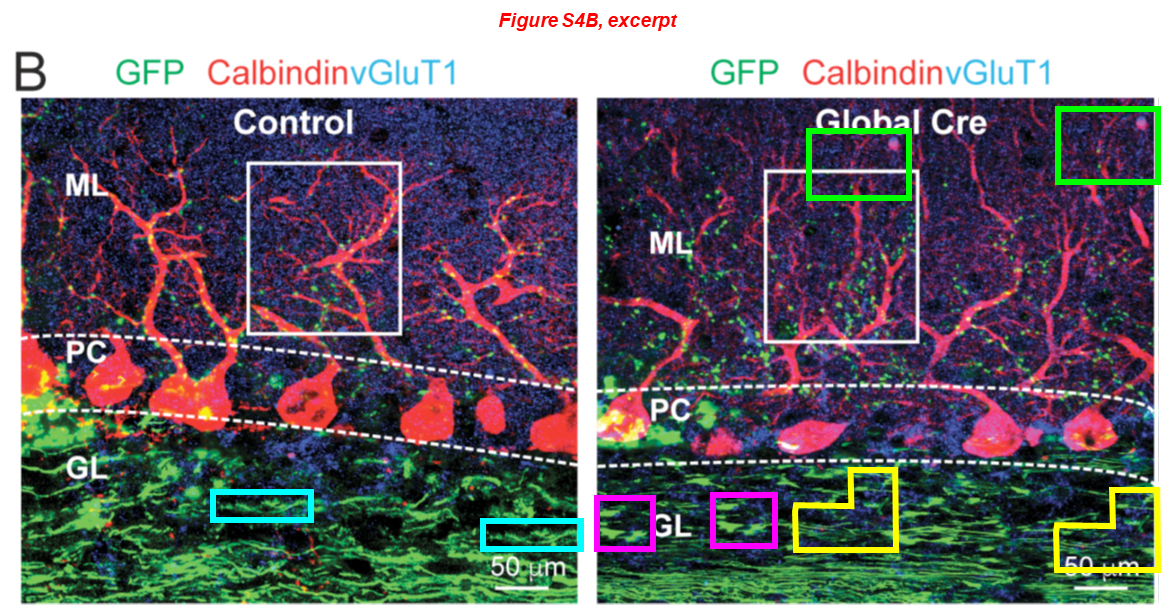
This definitely calls for a retraction. If I didn’t know for a fact that Professor Südhof was widely hailed as a feminist hero (stop sniggering!), I would be tempted to think that someone can’t cope with being beaten by a woman (i.e., Bik), and so he decided to… well, beat up himself.
“Eureka” moment
This case of a Südhof paper, sent to me by a reader, may look small, but it suggests utter sloppiness and disregard for reproducibility in that Stanford lab:
Shuzo Sugita , Ok-Ho Shin , Weiping Han , Ye Lao , Thomas C. Südhof Synaptotagmins form a hierarchy of exocytotic Ca(2+) sensors with distinct Ca(2+) affinities The EMBO Journal (2002) doi: 10.1093/emboj/21.3.270


The first lane in each gel of Figures 2 and 3 is spliced on. If the authors kept repeating the experiments multiple times as they proclaim, why couldn’t they at some point arrange the samples on a gel correctly, to avoid gel splicing? As other labs successfully achieve?
The evidence was never approved by PubPeer moderators, and Südhof did not reply to my email.
Joe Loscalzo’s Drag Show
“Dr. Loscalzo […] has a more cool-headed awareness and philosophy of research ethics than anyone else. We are here to stop the reckless defamation of Dr. Loscalzo and baseless attacks on his papers. Please ignore any malicious concerns and conspiracies. “
As the hounding went on, Südhof kept complaining on PubPeer how much he is being censored by PubPeer. To prove how much he is being cancelled, de-platformed and silenced, this Nobelist and Stanford’s dean Steven Goodman, (founder of the Stanford Program on Research Rigor and Reproducibility), got themselves a journalist to write what a hero of research reproducibility our Nobel Tom really is. The result appeared in The Mercury News on 20 February 2024:
“An important paper recently published by an esteemed Stanford research team reported an unusual result: An experiment went wrong. […]
While headlines are dominated by fraud or research misconduct cases, including a scandal that led to the resignation of Stanford University President Dr. Marc Tessier-Lavigne, these instances are relatively rare. A bigger problem is experimentation that lacks robust design, methodology, analysis and interpretation of results — so arrives at the wrong conclusions.
“Our efforts highlight the importance of experimental rigor,” said Stanford postdoctoral neuroscientist Kif Liakath-Ali, who conducted the work with Nobel Laureate Thomas Südhof.
His revelation — that sometimes a negative can be a positive — came while he was trying to reproduce and build upon a 2017 study about the behavior of brain cells. He wanted to understand the regulation of brain cells, with major implications for memory, behavior and neurological disease. He discovered that the previous approach in the lab had killed cells, leading to “a skewing of results and biased conclusions,” he said. […]
Science is famed for its “Eureka” moments. […]
“Liakath-Ali did what no one else had done: He took the care to look at the cells,” said Goodman.
Nobel Laureate Südhof commended his perseverance.
“Science operates by a trial-and-error process in which scientists, like all other humans, also make mistakes,” he said. “To distinguish valid results from erroneous ones, it is necessary to repeat experiments independently.””
Svante Pääbo: Nobel Disease before Nobel Prize
Svante Pääbo, the father of paleogenomics, went funny before his Nobel Prize.
That groundbreaking reproducibility study by Südhof and his postdoc was published 3 years ago and in Frontiers, addressing a 2017 Chinese paper in Nature Neuroscience.
Kif Liakath-Ali and Thomas C. Südhof The Perils of Navigating Activity-Dependent Alternative Splicing of Neurexins Front Mol Neurosci. (2021) doi: 10.3389/fnmol.2021.659681
Most likely, Südhof’s counter-study was rejected by Nature Neuroscience for a long time despite his Nobel Prize authority, until he gave up and published it in Frontiers. As it happens, Südhof’s own retracted paper Lin et al PNAS 2023, which he admitted was based of falsified data, is also about neurexins.
The rest of the Mercury News article for some reason compares Südhof’s Frontiers achievement to the discoveries of Alexander Fleming and Thomas Edison, and, even weirder – educates us that Andrew Wakefield and Didier Raoult were merely sloppy scientists, and not fraudsters.
Raoult. Une folie française: book review by Alexander Samuel
A critical review of a recent book about chloroquine guru Didier Raoult and the many French politicians who let him operate above the law.
It is beyond pathetic.
Much of the above material appeared in earlier Friday Shorts.
I thank all my donors for supporting my journalism. You can be one of them!
Make a one-time donation:
I thank all my donors for supporting my journalism. You can be one of them!
Make a monthly donation:
Choose an amount
Or enter a custom amount
Your contribution is appreciated.
Your contribution is appreciated.
DonateDonate monthly




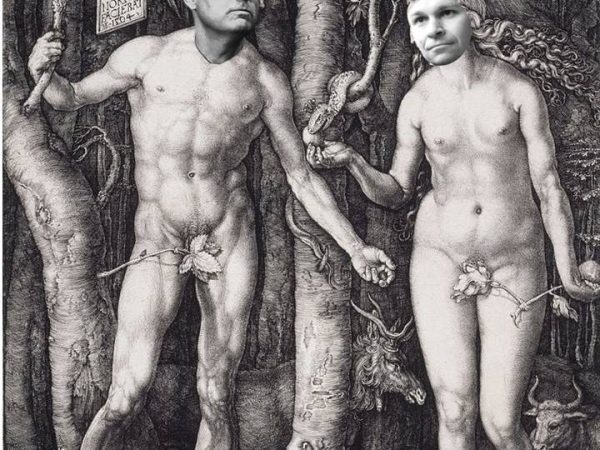




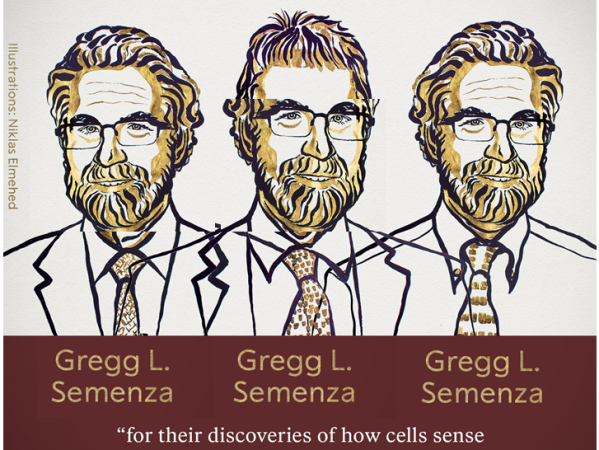




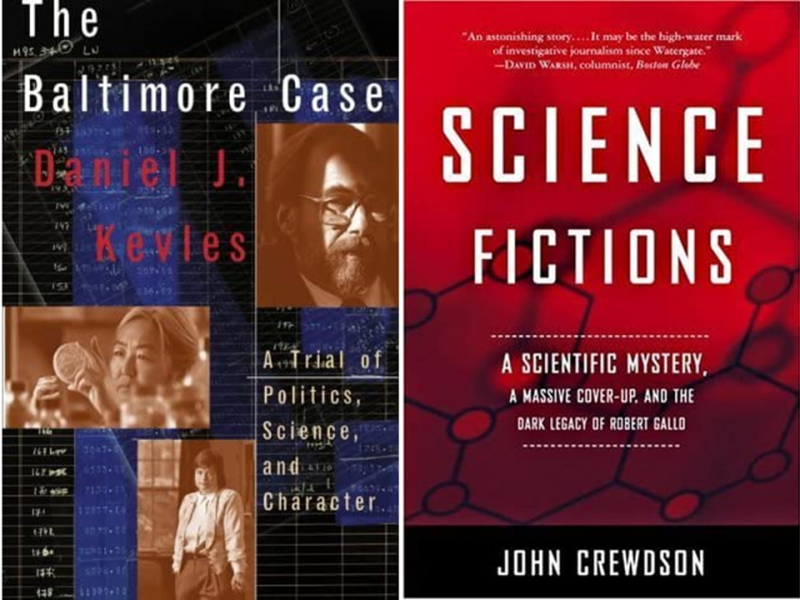
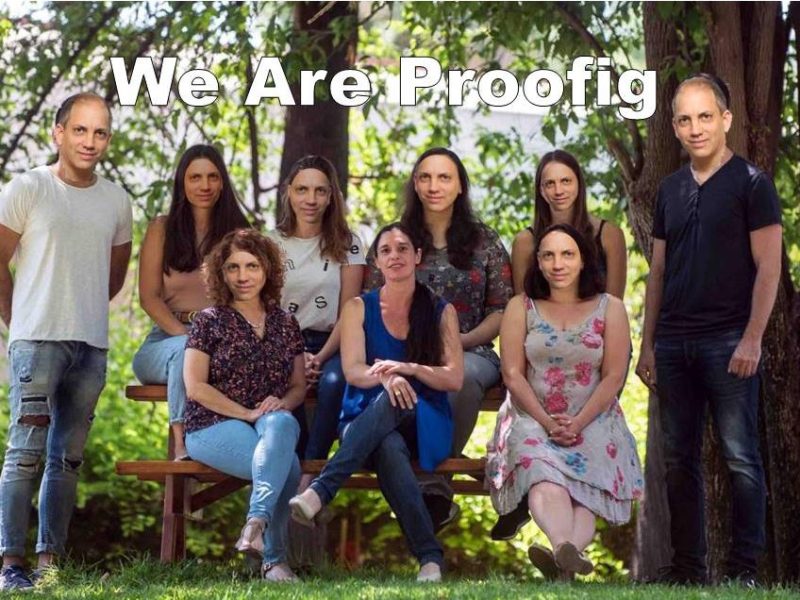
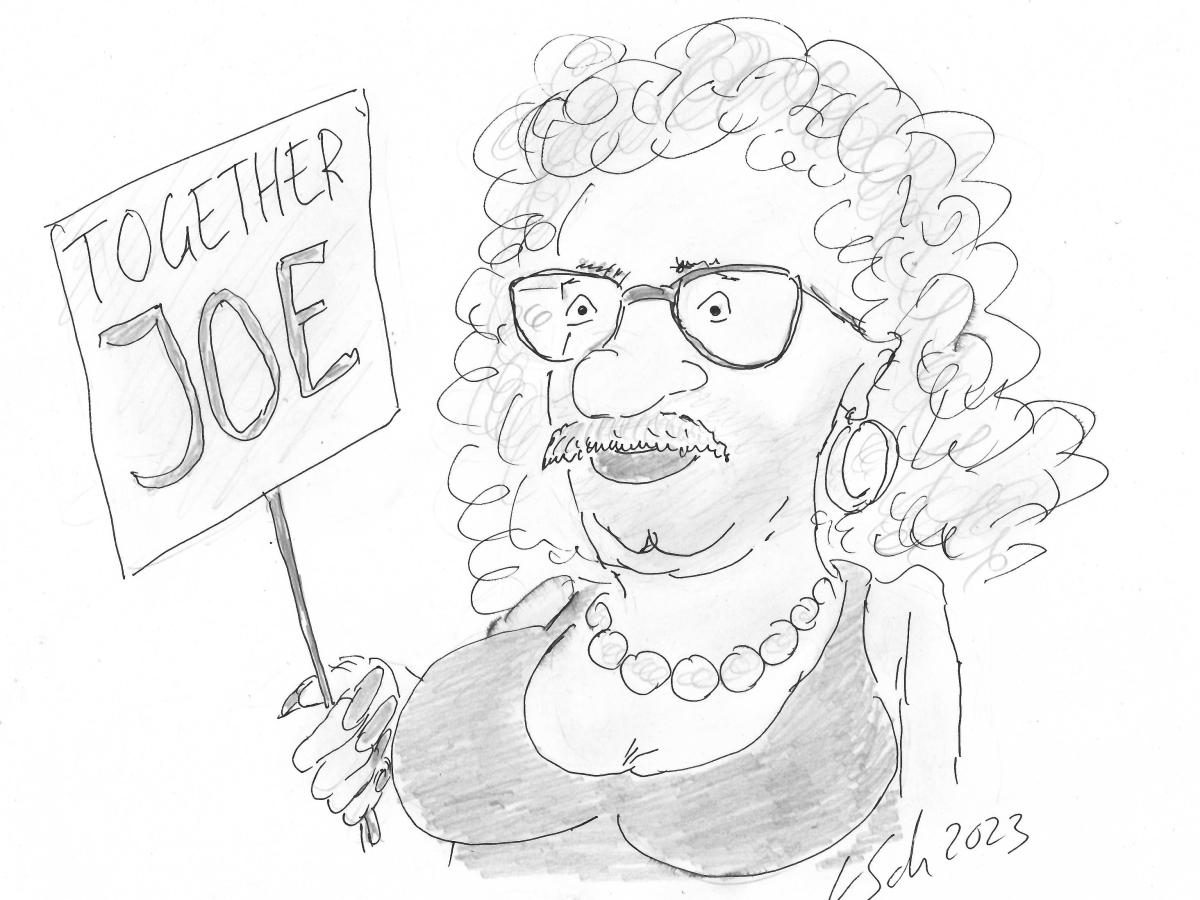



Oh, well, what is TS to do? Good lab staff is hard to come by. You really can’t make him responsible for the lack of image management skill of the imbeciles he has to oversee. Nobel-worthy PIs, on the other hand, are a dime a dozen.
LikeLiked by 1 person
Amazing how after 13 years the correct images is swiftly found.
https://pubpeer.com/publications/6A24D71A02F213024FBA3452BD89DA#1
Jaewon Ko self-investigating again:
“Dear Community:

I was the first author of this paper and noticed the following error during on-hands inspection of my previous papers: two identical images in Supplementary Figure 2C and 3C were inadvertently presented (indicated with blue colored squares). After investigating my old files, I was able to find the correct image, which is now presented in orange colored square (Corrected Supplementary Figure 3C). I do not clearly recall why this error exactly occurred”
LikeLike
BEWARE OF RUSSIANS BEARING GIFTS!
Tom accepted a gift authorship from a russian at Scripps. Now he must take responsibility for the russian fraud! Haha.
Masafumi Shimojo, Joseph Madara , Sandra Pankow , Xinran Liu , John Yates , Thomas C Südhof, Anton Maximov Synaptotagmin-11 mediates a vesicle trafficking pathway that is essential for development and synaptic plasticity Genes & Development (2019) doi: 10.1101/gad.320077.118


Bik on Figure 1D:
“Pink boxes: the same area appears to be visible four times: one time in the Syt11 blot, two times in the Syt 1 blot, and one time in the Stx1 blot.
The area is stretched differently on each occasion”
Bik: “The bands are all presented as saturated black blobs on a nearly uniform grey background, without any dynamic contrast.”
LikeLike
Holden Thorp is already busy fixing Tom’s reputation.
His assistant Jessica Slater already posted on PubPeer this:
LikeLike
My own contribution to Südhof posting, where I am labelled as “the accuser”, Südhof misunderstands a simply stated question, does not provide raw data consisting of a few numbers.
LikeLike
Two Nobel prize winners on that paper, apparently neither willing (or able) to share a datset consisting of less than 20 numbers published less than ten years ago.
LikeLike
I think you are driven by financial interests!
LikeLike
It’s depressing to see Lulu get a good job, quite frankly. It will be interesting if Irvine kicks her out like Constance Iloh, the education assist prof busted for plagiarism at Irvine. I hope so.
LikeLike
Awwwww…. how sweet……..
LikeLike
Sudhof is in a deep shit situation, his own lab members are posting the errors now to give an impression how irrelevant these errors are but it’s backfiring on him because there are more serious problems are revealed.
With the funding he gets its a true crime to publish such falsified data and pretend the mistakes are irrelevant to science. Such a dump explanation!
if the problems in his papers across different authors are so similar and consistent within multiple papers (over 25 paper are flagged now and who knows how many more to come), the burden is on him than the lab members, a systemic issue might be going on in his lab encouraging and pushing the lab members to publish falsified data (intentionally or unintentionally) to meet his standards….
LikeLiked by 1 person
This behavior maybe largely independent of Sudhof. My hypothesis is that there is a much greater temptation by post-docs to cheat in a lab headed by a Nobel prize winner or National Academy of Science member compared to your ordinary unknown PI, as you know all you need to do is get one high profile paper in Science/Nature/Cell and you will get a decent job, because the letter from your famous advisor carries so much power. I formerly called this the Croce effect as I suspect that may explain a lot of the fraud coming out of this lab, but I am going to rename this the Croce/Sudhof effect. The basic Idea here is this is not driven by pressure from the advisors themselves, as they are too busy doing other things to really closely pay attention to what is going on their lab, but by the great ambition of the post-docs.
LikeLike
I spent most of my day trying to figure out how ‘young scientists who forgot to press a button hard enough’ produce all these ‘simple copy/paste errors,’ or even keep parts of mice alive for whole days.
When I fake data, I always have to press a lot of extra buttons that are absolutely unnecessary for simple copy/paste errors, let alone fewer buttons or not pressing a button at all. Which software are they using?
What genuinely puzzles me is why studies have so much data/images that do not contribute to the conclusion. Why include them at all?”
LikeLiked by 1 person
Furthermore, proving that a paper from China is wrong is pretty low-hanging fruit; and they get a Fronteirs paper out of it. Probably wouldn’t have happened if the word “Sudhof” was not in the authorship. Pathetic is correct.
LikeLike
https://www.science.org/content/article/nobel-winning-neuroscientist-faces-scrutiny-data-discrepancies-papers?utm_medium=ownedSocial&utm_source=Twitter&utm_campaign=NewsfromScience
More papers from Sudhof’s lab are under investigation, they should ask for the raw data, nothing better than the data can prove the flagged papers are fabricated or manipulated!
LikeLike
Actually, looking for bullshit biotechs, then shorting their stock, sounds like a very viable strategy to make money.
LikeLike
https://en.m.wikipedia.org/wiki/Pump_and_dump
LikeLike
is Holden Thorp editor in chief? Is this usual to personally comment on correcting papers as an editor?!
LikeLike
such a strange response by Sudhof when he could simply release the original images to take away the concerns. Marteen is amazingly shows how the images have been manipulated,
I am almost certain that Sudhof is aware that the images are manipulated….
Sudhof response on Pubpeer:
” Orchestes (self-identified as Dr. Van Kampen) continues to use the term ‘cloned’ for image distortions induced by the old Leica confocal software and couples this accusation with broad speculations (‘could have been selected’). His remarks do not take into account a common stitching issue in older confocal microscope software. Repeating the same accusations is not productive, especially if there is no evidence besides observed image distortions and no benefit to the paper by the observed image distortions. Orchestes publicly repeatedly accused my former postdocs of misconduct, often reiterating the same accusations again and again, which does raise the question of motivation. My responses and explanations on PubPeer are often censored so I will take a screenshot of this comment for documentation purposes””
LikeLike